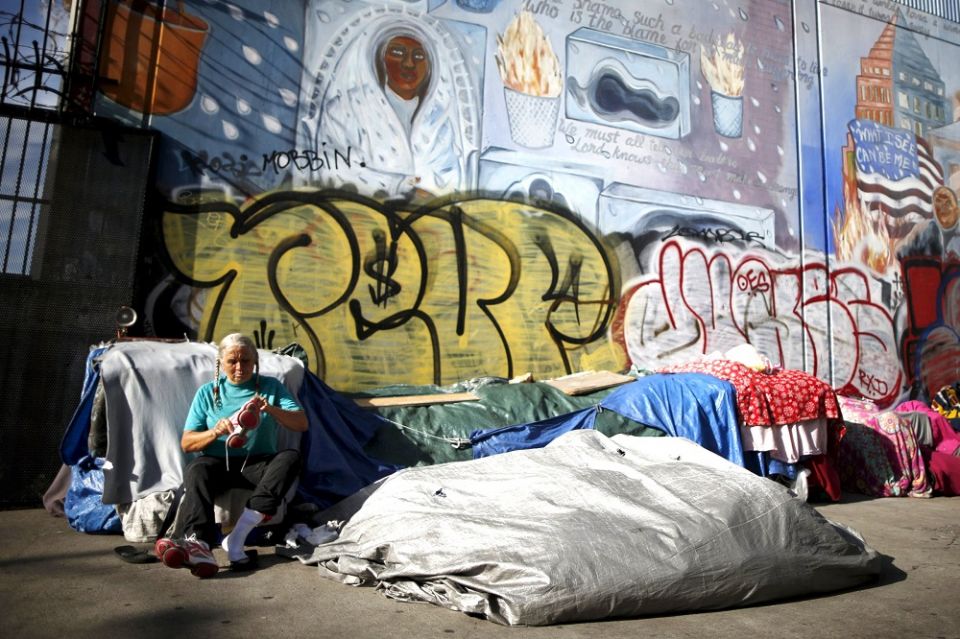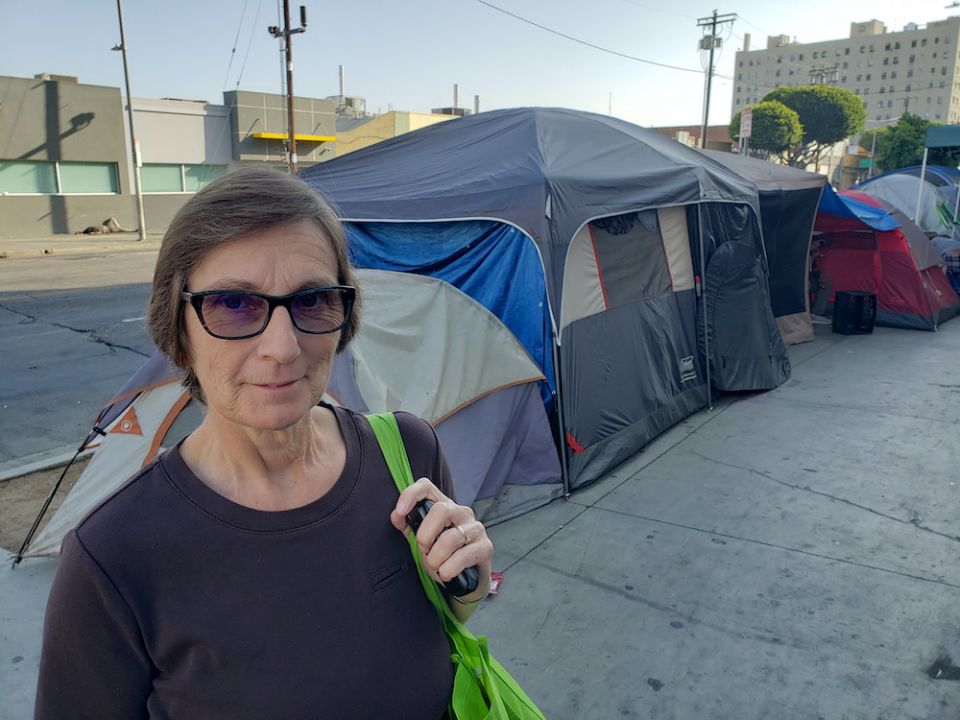CNS - Skid Row resized.jpg

Home.
That word has meant more in recent months. As COVID-19 spread across the globe and shelter-in-place orders followed, some were able to hunker down in a familiar, safe space to ride out the unprecedented pandemic.
However, that wasn't necessarily the case for the estimated 1.6 billion people around the globe who live in substandard housing: tent settlements, rickety shacks, dilapidated urban apartments with two or more families, makeshift shelters fashioned out of junked cars and truck trailers, and more.
Those who are homeless are at higher risk of catching and dying from COVID-19; in the United States alone, more than half a million people were deemed especially vulnerable to the virus because of their lack of suitable housing.
In February, months before the coronavirus had infected more than 10 million people globally, Global Sisters Report launched an ambitious series, A Place to Call Home, that focused on Catholic sisters from multiple congregations and countries helping those who are homeless or lack adequate shelter.
As the pandemic began to escalate, we talked about stopping the series. Instead, we moved forward in a world that suddenly looked different. We asked our writers to check in with the sisters in their stories to discuss how COVID-19 fears and restrictions affected their projects.
Now, at the series' midpoint, GSR has written about how inadequate housing affects teens and young adults, families, migrants, the elderly, and those displaced by natural disasters and climate change. We have talked to or heard from sisters in Kenya, India, Vietnam, Puerto Rico, the Philippines and the United States.
Over the next week, we will showcase a few of the pieces from A Place to Call Home ahead of a new story, which will be published Thursday, July 9. These and all of the pieces are worth revisiting — or enjoying for the first time if you missed them.
Farrell homeless c.jpg

A Place to Call Home: Sisters address inadequate housing worldwide by Chris Herlinger, published Feb. 10
The first piece in our series serves as an introduction to the work of hundreds, if not thousands, of sisters in ministries that help those who are homeless or advocate for better housing policies and more affordable housing. At the core of that ministry is a moral imperative grounded in the Gospel and the belief that having a home affords human dignity.
The United Nations estimates that 3 billion people will need access to housing by 2030, yet the U.N. had not tackled the issue head-on as a priority for action until February. There was not even an agreed-upon definition of homelessness.
"No one can escape the fact that many people in the world are not having some of their fundamental needs met," said Sr. Veronica Brand, who represents the Religious of the Sacred Heart of Mary at the U.N.
Reporter Chris Herlinger was able to attend the Feb. 10-19 meetings, just weeks before the increasing cases of COVID-19 led to the cancellation of plans worldwide.
Puerto Rico 12 resized.jpg

Aftershocks and anxiety: Puerto Ricans distrust homes after devastating earthquake by Soli Salgado, published May 14
The earthquake that struck Puerto Rico on Jan. 7 damaged over 8,000 houses, leaving 2,500 uninhabitable. Thousands of people now live in tents, awaiting home repairs or afraid that their houses may cave in. Many have not been inside their homes since the night of the earthquake.
"A lot of times, the house is safe — engineers have told them it's fine to keep living there — but still, people are too scared," said Sr. Mildred Vázquez of the Siervas Misioneras de la Santísima Trinidad. "They'll sleep outside their homes in tents or their cars because they're afraid of what a tremble can do to their home while they're sleeping."
Wanda Rodríguez and her husband, their son and their three young grandchildren sleep in a tiny wooden home right next to their old house, with an outdoor kitchen and a makeshift shower and toilet. They could live like this for several more months.
"Any time I feel a tremble, my heart starts racing," she said.
Advertisement
Advertisement
Strong bonds on the verge of being destroyed by Sr. Dorothy Fernandes, published April 30
In India, in the name of development, the government is simply evicting people who live in substandard housing in slums in Patna, India, leaving them with no shelter, Sr. Dorothy Fernandes wrote in a column for GSR. But those people are part of communities, and local women leaders are trying to assert their rights.
"For the government and officials only look at development as the key to the future; but to people who live on the periphery — who have shared their joys and sorrows and grown up together — it makes a big difference," she wrote. "It seems as if they are being uprooted; their history being destroyed."
Bureaucrats and government officials seem to think evicting people is easy because those being evicted have moved in recently, she wrote. But those officials have their heads in the sand.
Helen Amos 1 crop resized.jpg

Q & A with Sr. Helen Amos: 'To be homeless is a health issue' by Chris Herlinger, published March 17
For almost 30 years, Mercy Sr. Helen Amos has been associated with Mercy Medical Center in Baltimore, Maryland. But within her health care ministry, she has spent the last 15 years working to end homelessness in Baltimore.
"People would ask me, 'Why do this?' I'd say, 'It's the right vision. We should be morally motivated to work on this because it's the right vision.' No one should be living in the street, or in a car, or bouncing around from one relative's couch to another," she said.
When we developed A Place to Call Home, we knew our series would not be able to fully encompass sisters' work internationally. We wanted to include the efforts of as many sisters as possible who are addressing homelessness and/or affordable housing issues. So we created a questionnaire so you could tell us how you, your community, or sisters you know are giving others a place to call home.
We received more than 80 responses as of June 30, which we used to create this interactive map showcasing sisters' work as well as GSR stories, Q&As and columns. And we're not done yet; if you would like to add to our map, please fill out our questionnaire here.
Like what you're reading? Sign up for GSR e-newsletters!


